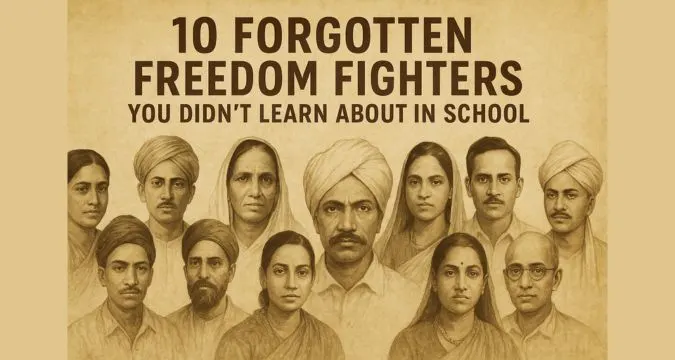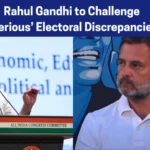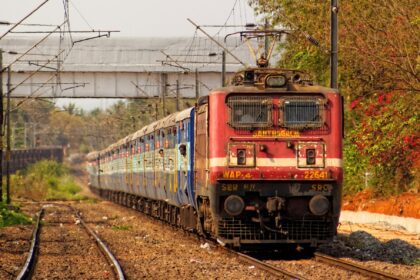The Missing Pages of India’s Freedom Story
The simple reality of the story of India as it is told is often in the lives of a handful of giants- Gandhi during the salt march, Nehru with his words on the tryst with destiny and Bhagat Singh at the gallows.
Such scenes are classic, yet they are merely a snippet of a much bigger and more complicated whole.
India has not become free and the fight was not by a few leaders, but by millions of people. Some of them were individuals whose names never made it to the pages of school textbooks, tribal warriors, poets, women in distant villages, and ordinary workers, whose lives were just as heroic as that of the battle-turned-schoolteachers.
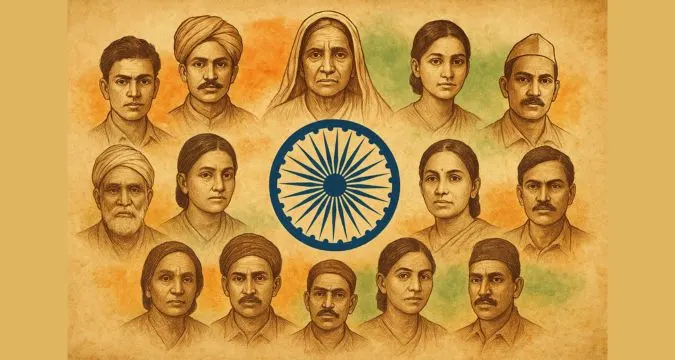
Most of these people:
- Lived and fought not in the urban centers of political power in India.
- Adhered to movements or ideologies opposed to the mainstream version of Gandhi.
- Laboured in areas or in tongues which national historians had disregarded.
- Were omitted deliberately in post-independence histories so as to serve a political purpose.
This article by The Vue Times, turns those lost pages by revisiting the lives of ten amazing, but unremembered freedom fighters. Their valor, beliefs, and sacrifice are worthy of attention but as one of the greatest idols of the Indian struggle of freedom.
1. Alluri Sitarama Raju – The Tribal Rebel Who Terrified the British
Background & Early Life
Alluri Sitarama Raju was born on July 4, 1897 in the village near Bhimavaram in what is now the Andhra Pradesh state, and as a young man made his way in the midst of the tribal villages. He made his home in the forest and got very close connections with the local communities. Raju was witness to the misery it brought when the British forced through the Madras Forest Act and deprived these tribes of their traditional land rights.
Freedom Struggle Contribution
In 1922, he initiated what was to be known as the Rampa Rebellion whereby he combined diverse tribal formations into a coordinated guerrilla unit. They used the forests as a shield; they attacked the police outposts, took the weapons, and the British supply lines. His troops were more at an advantage of the ground of the area and could attack lighting and fade away without a trace.
Turning Point
The take over of Chintapalli police station was one of his boldest moves when his men took possession of modern rifles and ammunitions- an occasion that put to shame the British.
Death & Legacy
The British chase narrowly escaped Raju two years later and on May 7, 1924, he was finally caught and shot. His reputation has lived on in Andhra Pradesh as Manyam Veerudu (“Hero of the Jungle”) and is hardly known otherwise.
Why Forgotten?
He was unlike the centrally advanced narrative of non-violent nationalism that was promoted regionally, as he rose in armed insurrection.
2. Matangini Hazra – The 73-Year-Old Who Died with the Flag in Her Hands
Background & Early Life
Matangini Hazra was a poor peasant born in 1869 in Tamluk of Bengal, and at an early age became a widow after leading a simple life. Although illiterate, she found Gandhi inspiring, as he also urged self-rule and she mounted a local Congress action when she was in her 60s.
Freedom Struggle Role
She was an active partaker of the Civil Disobedience Movement and was constantly detained several times. By 1942, when the Quit India Movement was on the move, Hazra would lead a procession in her area and would even use the tricolour, on many occasions.
Turning Point
On September 29, 1942, she led a demonstration to seize a local police station. The British fired but Hazra continued walking forward chanting Vande Mataram. She was shot several times and she collapsed holding the flag in her hands.
Death & Legacy
Her martyrdom has transformed her into a role model of how rural women engaged in the freedom struggle. Her name is inscribed on schools, streets and even a statue in Kolkata.
Why Forgotten?
Her work was neglected due to the urban-centralized accounts of political activism of Bengal.
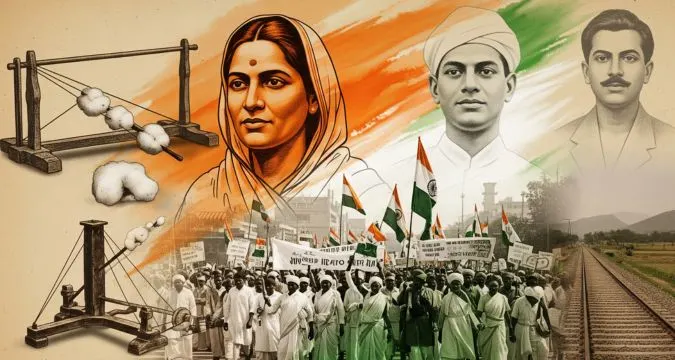
3. Peer Ali Khan – The Bookbinder Who Sparked the 1857 Revolt in Patna
Early Life & Background
Peer Ali Khan lived in Patna as a modest bookbinder of limited means, but radical views. During the tense times leading up to the 1857 uprising, his workshop, in turn, became his secret center of revolutionary activists.
Contribution to Freedom Struggle
He would conceal seditious messages in the binding of books, arrange the activities of rebels as well as supplying weapons. However, local rebellion was led by a local warrior, Peer Ali Khan, who revolted against the British by assaulting British enterprises in Patna when the revolt in northern India burst out.
Turning Point
British forces raided his hideout on July 4, 1857. He would not tell his interrogators the names of his associates even through a brutal interrogation.
Death & Legacy
On the same day he was hanged. His courage is documented in British trial records, but is hardly mentioned in Indian textbooks.
Why Forgotten?
Small rebellions in 1857 brought early martyrs who were hardly recorded by the national narratives shining light on rebellions in Delhi, Kanpur, and Lucknow.
4. Kanaklata Barua – Assam’s Teenage Martyr
Background/ Early Life
Kanaklata Barua was born in 1924 in Gohpur district of Assam and lost her parents early. She was an energetic girl who enrolled in the local chapter of the Mrityu Bahini (Death Squad), a youth volunteer organization, along the lines of the Quit India Movement.
Participation in Freedom Struggle
She was selected at the age of 17 to lead a procession to raise the tricolor at the police station in Gohpur.
Turning Point
However, Marian Kanaklata refused to stop when police targeted the people with the aim of their rifles on September 20, 1942. Before she could give the British their flag, she was gunned down.
Death & Legacy
Her sacrifice has served as a rallying cry in Assam but other parts of the country just do not know about it.
Why Forgotten?
The role of northeast India in the freedom struggle has remained sidelined in the national Histories.
5. Velu Nachiyar – The Queen Who Fought the British 85 Years Before 1857
Biography: Background & Early Life
Rani Velu Nachiyar was born in 1730, at Ramanathapuram, Tamil Nadu. Her fluency in multiple languages (she could speak several of them) as well as martial arts and military strategy were trained.
Contribution to Freedom Struggle
However, after her husband, the king of Sivaganga, was murdered in fighting the British East India Company, Velu Nachiyar escaped, consolidated, and established alliances with all of the ruling monarchs nearby. She built an all-women army called the Udaiyaal Brigade.
Turning Point
She made a bold raid upon British troops, and, in a suicide mission, blew up an enemy munitions dump–perhaps the first known such action in Indian resistance.
Death & Legacy
After reclaiming her kingdom, Velu Nachiyar governed it for 10 years, which also made her one of the earliest Indian rulers to thwart the British militarily.
Why Forgotten?
Her bid against oppression, which came to an end during the 18th century, was prior to the formal history of the struggle against oppression and regarded as a local struggle.
6. Potti Sriramulu – The Man Who Fasted for a United Telugu State
Early Life And Background
Potti Sriramulu was born in 1901 in the Madras presidency, and was a devoted Gandhian who spent his life in the service of social causes, one of which was the right of Dalits, and the reform in temple matters.
Contribution in Freedom Struggle
He took part in Salt Satyagraha and various non-cooperation movements. After 1947, he re-oriented towards linguistic reorganisation since he saw language as the basis to cultural identity.
Turning Point
In 1952, he once started a fast unto death in support of forming Andhra State to provide Telugu speakers a state of their own. He was dead 58 days later; his death triggered huge protests, which compelled the government to take action.
Death & Legacy
His death was directly followed in the creation of Andhra State in 1953, which established a precedent in India regarding the linguistic states.
Why Forgotten?
His greatest accomplishment was after independence and this is one of the reasons why his contribution to the struggle before 1947 is often ignored.
7. Birsa Munda – Tribal Messiah of Jharkhand
Background & Early Life
Birsa Munda was born in 1875 to a family that lived in the Chotanagpur Plateau and where there was constant British exploitation of tribal land. He was being affected by both the Christian missionary and indigenous traditions.
Freedom Struggle Role
Birsa organized a movement called Ulgulan (Great Tumult), and it opposed British law and restored the tribe-rule and destroyed the colonial government.
Turning Point
His slogan of Abua raj, ate jana raj (Our rule, not foreign rule) appealed to the tribal communities especially.
Death & Legacy
He was arrested in 1900; however, he perished enigmatically in Ranchi jail at the age of only 25. He is now considered as a folk hero in Jharkhand.
Why Forgotten?
His tribal, localised revolt was not within the frame of pan-Indian nationalism.
8. Kamaladevi Chattopadhyay – The Cultural Architect of Independent India
Background and Early life
Kamaladevi was born in 1903 as a widow at a young age but managed to educate herself as well as get involved in political activities in Mangalore. Annie Besant and Sarojini Naidu influenced her.
Contribution to Freedom Struggle
The first woman to contest a seat in the Indian legislature, she also participated in Salt Satyagraha. Theatre and handicrafts are also recreated through which she created a form of resistance and revived cultural pride in India.
Turning Point
She smuggled salt to escape British prohibition, and was several times arrested.
Death & Legacy
After independence, she established organizations such as the Crafts Council of India that kept the ancient arts alive.
Why Forgotten?
She had a political activism, which was overshadowed by her cultural work, causing her to be less known as a freedom fighter.
9. Tanguturi Prakasam – The ‘Lion of Andhra’
Background & Early Life
Pantulu Prakasam was born in 1872 in Andhra Pradesh and after becoming a lawyer in England, he returned to India.
Freedom Struggle Role
In 1928, at the protest of the Simon Commission in Madras, he confronted British soldiers wielding arms without backing down, and thus had earned the name Andhra Kesari.
He was one of the leaders of the Civil Disobedience Movement and the first Chief Minister of Andhra State.
Death & Turning Point
He passed on in 1957, mostly forgotten by the national narratives but remembered in Andhra.
Why Forgotten?
His earlier heroics were overshadowed by post-independence political controversies.
10. Aruna Asaf Ali – The First Lady of the Quit India Movement
Background and Childhood
Aruna Ganguly was married off to Asaf Ali a senior Congress leader in 1909. During the 1930s, she got into political protesting.
Freedom Struggle Role
When the Quit India Movement was in 1942 she lifted the Congress flag at Gowalia Tank Maidan against police instructions to raise the flag and it inspired countrywide protests.
Turning Point
She became one of the most wanted revolutionaries as she went underground and published an underground paper in order to sustain the movement.
Death & Legacy
She has also been India’s first female mayor of Delhi and after her death she was given The Bharat Ratna.
Why Forgotten?
Her socialism and subsequent political engagements had continued to relegate her to the periphery of state-produced official accounts of the histories of independence.
Conclusion — Restoring the Lost Chapters of Freedom
The liberty of India was not created by some handful, but by an army of millions having each an account worth a production.

These discarded warriors, who might otherwise have learnt their craft as a teenage martyr, a tribal warrior, a cultural revivalist, and (the least risk-aversive of them all) an indignant leader of the demonstrations, are also ways in which history can be imagined than it can be read in most textbooks.
It is not about honoring the past but rather making sure those simple people and their courage, conviction and sacrifice which brought this nation into being is never diminished to a few recognizable faces.

